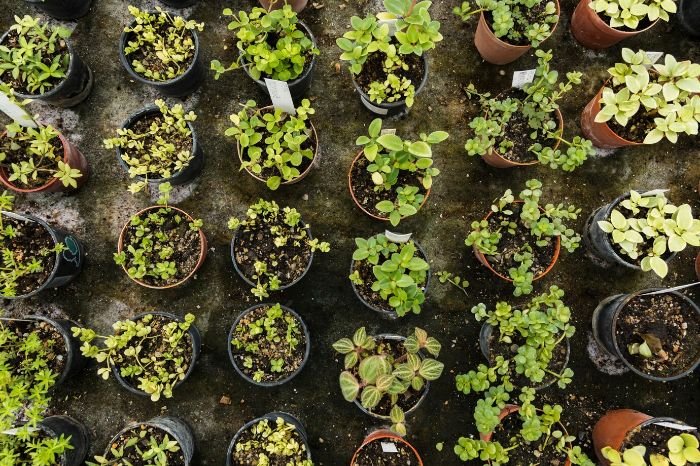To make your garden grow well, picking the right plants is key. Different plants thrive in different settings.
The idea of “right plant for the right place” is vital. First, you must look at your garden closely. Think about how much light it gets, the type of water, the kind of soil, and if it’s windy. Even the plants’ ability to deal with pests is a big consideration. So, a plant like the River birch is chosen more often than the European birch. The River birch fights off insects better.
Choosing plants that are native can be a great idea. They are more likely to do well in your area, and they help the environment too. By using these plants, your garden can support local wildlife and stay healthy for years.
Key Takeaways
- Thorough site evaluation is essential for choosing suitable plants.
- Consider light, water quality, soil type, exposure, and hardiness zones.
- Resilience to pests and diseases is crucial for plant health.
- Native plants are often superior for their adaptability and ecological benefits.
- Choosing the “right plant for the right place” ensures sustainable garden landscaping.
Table of Contents
Importance of Proper Plant Selection
Choosing the right plants is key for a fruitful garden. It’s vital to think about how big plants will get. This prevents them from growing too close and damaging your yard. Picking the right plants can also make your garden easier to take care of. This leads to less work and a more sustainable garden.
Gardens are more than just practical spaces. They also bring beauty to our lives. When you pick plants carefully, you make your outside area look better. This is because plants add different colors, shapes, and even flowers. Together, these features create a beautiful garden.
But, plants do even more for us and the environment. Some plants help local animals and keep nature in balance. These are usually the plants that have always grown in the area. They give a home and food to helpful insects and animals. So, choosing the right plants is a big part of having a great, easy-to-care-for, and green garden.
Choosing Plants Based on Garden Type
Picking the right plants for your garden starts with knowing the garden type. You should think about what the garden needs, how much space you have, and what plants do each season. This way, your garden will look good and grow well.
Vegetable Gardens
For vegetable gardens, pick what grows best in your area’s weather and soil. Think about the seasons and plan your garden to help your plants succeed. For example, tomatoes, bell peppers, and cucumbers need lots of sun and soil that drains well.
Flower Gardens
Flower gardens need careful planning for beautiful colors and blooms all year. By choosing many different flowers, you can have a garden that looks good in every season. Marigolds, daisies, and petunias are great for adding color and beauty.
Perennials vs. Annuals
Using both perennials and annuals creates a garden that looks good for a long time. Perennials come back each year without much work. On the other hand, annuals like zinnias and impatiens bring bright colors. This mix makes sure your garden changes beautifully every season.
Herb Gardens
Herb gardens are not just for cooking but also for how they smell. When planning an herb garden, pick herbs that grow well together. Basil, rosemary, and thyme are common. They need different care but they add flavor and freshness to your meals.
Climate Zone Considerations
It’s important to know what plants need in different climate zones for your garden to do well. By choosing the right plants for the area, your garden can stay healthy and pretty even when it’s very hot or cold.
Plants for Different Climate Zones
Each climate zone needs its own special plants to grow well. Check out the USDA Hardiness Zones to see what plants work best where you live.
Cold-Hardy Plants
In places with cold, snowy winters, picking plants that can handle the chill is key. Cold-hardy plants, like junipers and pines, do well in these tough conditions. They can survive the winter and still look good.
Heat-Tolerant Plants
For areas with hot, sunny summers, choose plants that love the heat. Lavender and black-eyed Susans are great for these places. They can take the high temperatures and still shine in your garden.
Drought-Resistant Plants
Places that don’t get much rain can use plants that don’t need a lot of water. Cacti and yucca are perfect for these dry spots. They keep your garden beautiful while saving water.
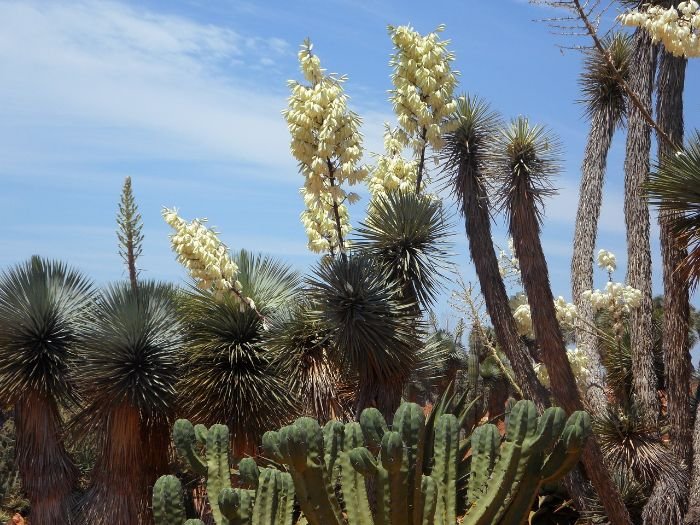
Picking the right plants for your climate is the first step to a successful garden. Whether you face cold, heat, or little rain, knowing what each plant likes makes your garden thrive. This is how you beat the weather and win at garden zoning.
Soil Conditions and Plant Selection
Knowing your soil’s condition is key to great gardening. Each plant needs certain soil types to be healthy. Matching these needs helps plants thrive.
Understanding Soil pH
Soil pH is vital for plant health. Different plants like different pH levels. Testing your soil’s pH helps you pick plants that will do well.
Acidic vs. Alkaline Soils
Plants prefer different soil acidities. Blueberries and azaleas like acidic soil. Meanwhile, lilacs and clematis do better in alkaline soil. Testing your soil pH will show you what to plant.
Improving Soil Structure
Amending soil improves its feel and ability to feed plants. Adding compost, for example, increases nutrients and supports root health. This is crucial for plants to grow well.
Soil Drainage Solutions
Good drainage stops roots from drowning. Options include raised beds or adding sand and gravel. These steps help plants grow in the best conditions.
Aesthetic Goals and Garden Design
When you design a garden, careful planning is key to reaching your aesthetic goals. This involves using basic design principles to create a landscape that looks good and feels right. If your garden includes low-light areas, consider exploring shade-loving plants as an option to enhance these spaces, ensuring your entire garden thrives beautifully.
Color-Themed Gardens
Many homeowners pick color-themed gardens to set a special mood. By using matching colors, your garden can look good all year. Picking plants with colors that go well together makes the garden more impressive.
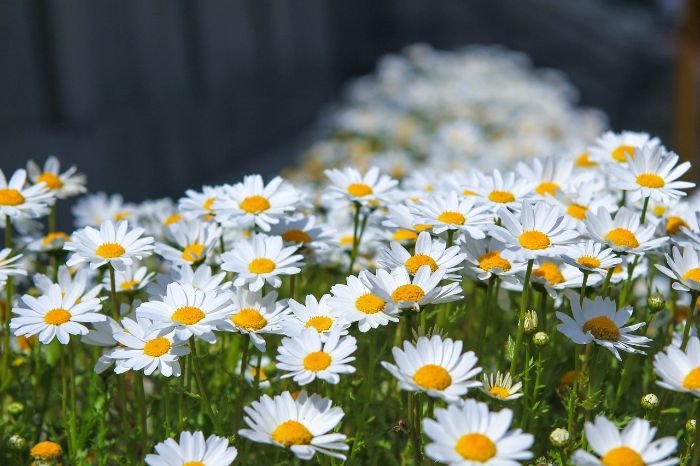
Planning with a Color Palette
Using a color palette right means choosing colors that fit your design well. You can pick one color or mix bold shades. The main aim is to keep the garden balanced and together. This makes the space beautiful and stirs up different feelings.
Climbing Plant Options
Climbing plants add height to your garden, making it more interesting. Plants like roses and clematis cover walls and fences with green. They also make a small yard feel bigger with their climbing nature.
Ornamental Grasses
Ornamental grasses add texture and life to the garden. Types like Miscanthus and Pennisetum add a delicate touch. They move with the wind, making the garden look more dynamic and complete.
Mixing good design, color balance, climbing plants, and grasses makes for a stunning garden.
Supporting Local Ecosystems
It’s key to help preserve our environment by supporting local ecosystems. Native plants in gardens are crucial for saving our ecosystem. They make homes for wildlife and help with pollination, keeping nature diverse.
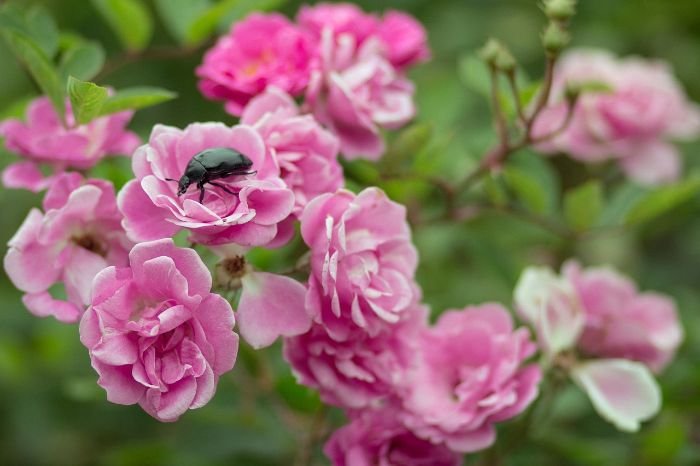
Importance of Native Plants
Native plants are vital for keeping ecosystems healthy. They are adapted to thrive in their local areas, making them great for wildlife. By growing native plants, we also use less water and chemicals, improving our soil and water.
Attracting Pollinators
A pollinator-friendly garden helps local wildlife. Plants that give nectar and pollen help bees, butterflies, and birds. These pollinators make sure plants can keep growing well.
Bee-Friendly Plants
Use bee-friendly plants to help bees survive and pollinate. Purple coneflower, black-eyed Susan, and wild bergamot are great for this. Planting them helps bees and boosts your garden’s health.
Plants for Birds and Butterflies
For birds and butterflies, choose plants that give nectar, seeds, and berries. Butterfly weed, aster, and elderberry are top picks. They provide food and homes, making your garden a great place for wildlife.
Special Garden Types
Special gardens let you design unique spaces that fit your interests. You can make a beautiful alpine area or a relaxing garden for your senses. Each type of garden needs certain plants and designs. In this part, we will look at different special gardens and what makes them special.
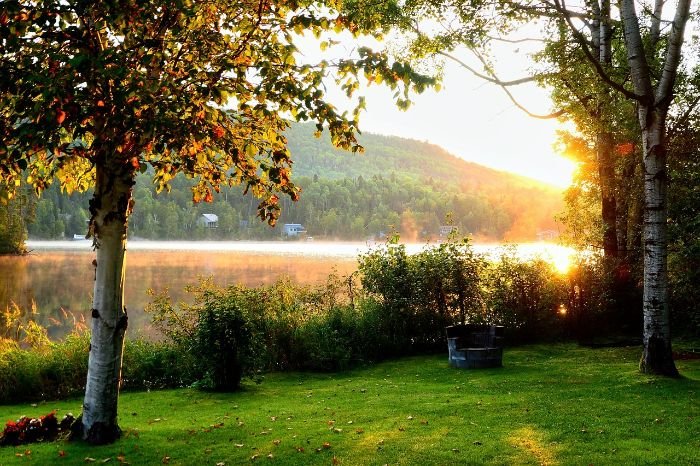
Rock Gardens
Rock gardens look like the mountains with hardy alpine plants. Plants like sempervivum and saxifraga are perfect for these gardens. They need little care and look great. They are a good choice for those wanting a mountain-like garden.
Plants for Alpine Conditions
Alpine gardens need plants that can live in tough, high places. These alpine plants don’t get tall and have strong roots. This helps them deal with cold and wind. Plants like edelweiss and alpine asters bring color to these areas.
Water Gardens
Water features make gardens peaceful. Gardens with water have plants like water lilies and lotus. These plants do well in water. Water gardens make the area look pretty and help the environment by supporting water life.
Engaging All Five Senses
Gardens that use all five senses are amazing. Smelling herbs like lavender and feeling soft plants is good for you. Hearing leaves or water can be calming. Colorful plants that you can eat make these gardens fun and good for your health.
Healing Gardens
Healing gardens are made to be calm and relaxing. They have plants like chamomile for peace and water for quiet. Together, these elements help your body and mind feel better.
Plants with Medicinal Properties
Plants in healing gardens can also help your health. Aloe vera is good for burns and peppermint helps your stomach. These gardens are not only pretty but also good for your well-being.
Practical Considerations
When planning a garden, it’s key to balance beauty and upkeep. Picking the right plants makes your garden sustainable and easy to manage.
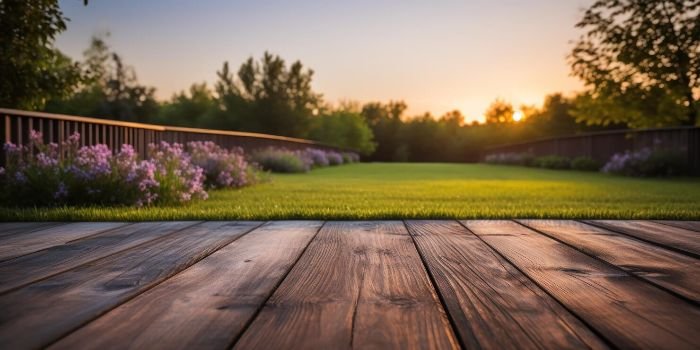
Low-Maintenance Plants
Choosing low-maintenance plants is crucial for a beautiful, easy garden. These plants need less cutting, watering, and feeding. This saves time and helps the garden stay sustainable.
Wind-Resistant Plants
For windy areas, pick plants that can handle the breeze. They have strong structures and deep roots. Examples include Panicum virgatum and Juniperus horizontalis.
Suitable for Exposed Gardens
Plants for open gardens help your landscape thrive. Look for types that love sunlight and wind. Lavandula and Thymus do well in tough spots.
Ground Cover Plants
Ground cover plants keep the land in good shape. Sedum and Phlox subulata grow fast and stop weeds. They also shield the ground from washing away.
Weed Suppression and Soil Health
Stopping weeds is vital for healthy soil. Use ground cover and mulch to keep the weeds at bay. This saves water and keeps soil nutrients. Plants like clover and fescue also help the soil stay strong.
Urban Gardening
Urban gardening brings nature into cities in a new way. It’s all about using city spaces wisely. To do so, we have to know how to work with urban areas and make the most of every inch.
Size, Root Behavior, and Canopy Spread
In cities, space is tight, so pick plants carefully. Look at how big they grow, their root behavior, and how wide they spread. Choose plants that grow neatly and don’t take up too much room. For example, in Tokyo’s roof gardens, small trees like Japanese maples are used. These choices make beautiful gardens in small spaces.
Edible Landscaping
More and more people in cities are growing food at home. It’s a fun way to get fresh fruits, herbs, and veggies. This mix of plants also looks great, adding beauty and usefulness to gardens. Edible gardens let you grow food and make your space pretty at the same time. It’s an enjoyable and efficient way to garden.
Combining Beauty and Utility
City plants can do more than just look pretty. By mixing ornamental and edible plants, your garden can be beautiful and useful. Using walls for plants can save space and bring in more types of greenery. This mix of beauty and function helps urban gardeners achieve their gardening goals.
Children’s Gardens
Creating a children’s garden is rewarding. It brings families closer through gardening. Also, it gets kids to love nature. Make sure these gardens are fun and safe. They should be places where kids learn by doing.
Tips for Creating a Kid-Friendly Garden
For a kid’s garden, fun and learning are key. Pick safe plants with soft leaves, like sunflowers. They’re beautiful and teach kids how plants grow.
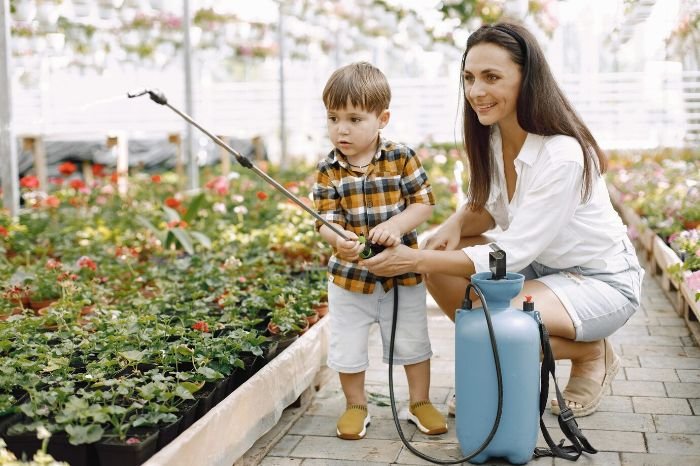
- Interactive gardening – Use raised beds so kids can plant and see plants grow. It’s a fun way for them to learn about plants.
- Family gardening – Do big projects together, like planting fruit trees. It’s a great way for families to bond.
- Educational elements – Use markers with plant names and fun facts. It makes the garden a place to learn about plants.
Create a garden that’s all about exploring and learning. It’s where families bond and kids grow to love nature. Start them young on the path of appreciating the environment.
Specialty Gardens
Specialty gardens are a chance to show off rare and odd plants, making the place stand out more. They use unique plants that make the garden look better and are fun to see. By picking strong plants, these gardens can keep looking good all the time.
Rare and Unusual Plants
Adding rare and odd plants to your garden makes it special. Think about plants like the Blue Himalayan Poppy and Lithops. They can turn any garden into a magical place.
Resilient Plant Selection
Picking rare yet tough plants is key for specialty gardens to last. These plants should match your garden’s needs. For example, plants like Japanese Knotweed and Gunnera can take on any challenge. This makes your garden both beautiful and strong.
Conclusion
To make a garden beautiful, pick the right plants and check the spot where they’ll grow. This makes your garden look good and helps it stay strong. Match plants to your local weather to make sure they will grow well.
Knowing about the soil and planning for beauty can help the plants and the environment. Gardens are like personal getaways that remind us to care for nature. They can have all kinds of plants, making landscapes more alive and helping the earth stay diverse and strong.
Mixing what you like with caring for the planet and knowing about plants makes a great garden. Create diversity and care for nature to turn your garden into a peaceful and beautiful place. This will not only make people happy but also help the earth.
FAQ
What are the key factors to consider for garden landscaping?
Key factors for garden landscaping include checking the light, water, and soil. You should also look at how the plants will face the weather and their hardiness zone. It’s important to pick plants that match these conditions. For example, River birch is better than European birch because it’s less likely to get sick.
Why is the ‘right plant for the right place’ concept important?
Choosing the right plant for its spot helps the garden stay healthy. It makes the garden need less work and look better all year. This way, your garden can match the local area and be easy to keep up.
How should one choose plants for different garden types?
For different gardens, you need to understand what the plants need. Vegetable gardens need crops that like the local weather and soil. Flower gardens should look good together and bloom at different times. An even mix of perennials and annuals keeps the garden bright and alive. Herb gardens need plants you can use in cooking that also smell good.
What are the considerations for plants based on climate zones?
The climate affects which plants will grow well. Some plants like cold places, others need a lot of heat, and some can live with little water. Knowing your climate helps you choose plants that will do best.
What are some considerations for special garden types?
Rock and water gardens need plants that fit the environment. Healing gardens should use plants that help people feel better. This makes the garden a place for the eyes and the soul.






